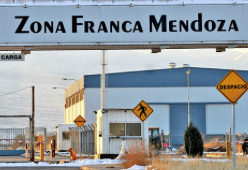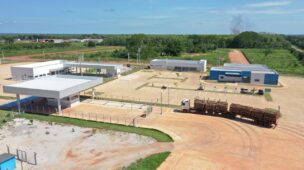Tempo de leitura: 5 minutos
The African Continental Free Trade Area was operationalised by African governments in February 2021 and was anticipated to significantly change Africa’s socio-economic development and growth. However, the COVID-19 pandemic, financial, climatic, and food-related shocks have elevated Africa’s poverty rates and further created socio-economic setbacks in African countries.[1] Therefore, operationalising the AfCFTA framework remains crucial towards strengthening Africa’s economic viability and competitiveness. This can encourage equitable growth, hasten the post-pandemic recovery and enhance the attainment of the United Nation’s Sustainable Development Goals and the African Union’s Agenda 2063.[2]
Thus, a robust manufacturing sector can broadly serve as an absolute path to economic growth and development through the AfCFTA.[3] However, Africa’s industrialisation and transformation agenda should be supported at the highest national, regional, continental, and global levels. By advancing the AfCFTA, Africa will enhance the industrialisation and manufacturing efforts to deliberately realise the mutually reinforcing interdependences between AU Member States.[4] If the AfCFTA is successfully implemented, it is anticipated that Africa’s manufacturing sector will double in size, with annual output rising to $1 trillion by 2025 and creating over 14 million jobs.
Notably, one of the primary goals of the AfCFTA is to “enhance competitiveness at the industry and enterprise level through exploiting opportunities for scale production, continental market access and better reallocation of resources.”[5] Industrialisation through value addition and manufacturing has been touted as the path to Africa’s sustainable development to accomplish diverse economic growth. This can be accomplished by diversifying strong multisectoral and multidirectional links to local economies.[6] However, African countries should address key structural and strategic weaknesses and fragilities that are impeding African economic growth and development and hinging on the success of industrialisation of the continent.[7]
Notably, AfCTA is projected to boost business-to-business spending in manufacturing in Africa to US$666.3 billion by 2030 from only $201 billion spending 2015.[8] As such, the African Union has been urging Member States to upscale their manufacturing capacities by developing dynamic pan-African enterprises and capital bases.
This can potentially unleash an inclusive and sustainable industrialisation pathway that encourages the participation of all economic agents, including small-and-medium enterprises, youth, and women. This is anticipated to enhance the generation of national wealth, job creation, and the expansion of entrepreneurship opportunities.[9]
Africa contains a wealth of favourable factors, particularly the availability of youthful labour and abundant natural resources and raw materials, which are a prerequisite for an industrial revolution.[10] Even though Africa has enormous potential to manufacture and significantly industrialise, the continent is lagging in the global value chain. Currently, Africa shares a global manufacturing rate of only 1.9%.[11]
As such, African economies primarily depend on raw materials’ extraction and exportation without any substantial value addition. For example, between 2011 and 2013, AU Member States manufactured goods that comprised 18.5% of exports whilst importing approximately 62% of goods. This significant trade imbalance is drawing wealth away from the continent.[12]
Africa’s industrial revolution has been impeded by the surplus of the low-skilled workforce and underemployed labour in Africa. For example, fewer than one in five Africans aged 15 to 24 have graduated from basic school, which constitutes about 20% less than the global average.[13] Furthermore, limited investments towards manufacturing are hampered by the lack of skills and efficiency, particularly in increasingly specialised forms of manufacturing.[14]
Observably, Africa’s infrastructure funding has increased by more than double since the year 2000, up to US$80 billion in 2015.[15] However, the energy infrastructural gaps have remained the cause of frequent power outages in several African nations. As a result, most manufacturers operating in West and East Africa are forced to rely heavily on expensive backup generators as their principal energy supply, which has negative implications for their profit margins.[16] Additionally, African electricity costs are three times higher compared to other developing nations globally. This is also compounded by the inadequate transportation infrastructural challenges that further complicate manufacturers’ capacity to benefit from local economic markets.[17] Notably, only a fraction of the African roads are paved to enable operations throughout the year.[18]
Most importantly, due to its burdensome taxation bureaucracy, Africa has substantial direct and indirect expenses compared to global manufacturing trade. For instance, it may require seven separate documents and approximately 51 days to export a container from Zambia to other AU Member States. However, undertaking the same process in Morocco may take only 10 days and four documents to transport a container of goods to another part of the world. This demonstrates the difficulty and disparity that manufacturers face when accessing African markets, let alone local markets, within the African continent.
To accelerate industrial development through manufacturing in Africa, Special Economic Zones (SEZs) have been established to promote an effective mechanism for rapid industrial growth.[19] These SEZs are delimited zones in which industrial development is promoted, incentivised, and supported through various developmental programmes. These SEZs are designed to attract and promote foreign direct investment and exports.[20] To this end, several SEZs are emerging in Africa, observed within various African countries establishing SEZs and industrial parks.[21]
As a result, the number of African SEZs has increased steadily in the last two decades, with the biggest SEZ located in Botswana with 85 000 hectares[22]. This is encouraged and propelled by the successful implementation of SEZs in Asia and Central America. For example, the number of AU Member States operating SEZs grew from 4 in 1990 to 38 countries by 2020.[23] AU Member States occupying the most SEZs include Nigeria, Tanzania, South Africa, and Egypt (see figure 1 below).[24]






Os comentários foram encerrados, mas trackbacks e pingbacks estão abertos.